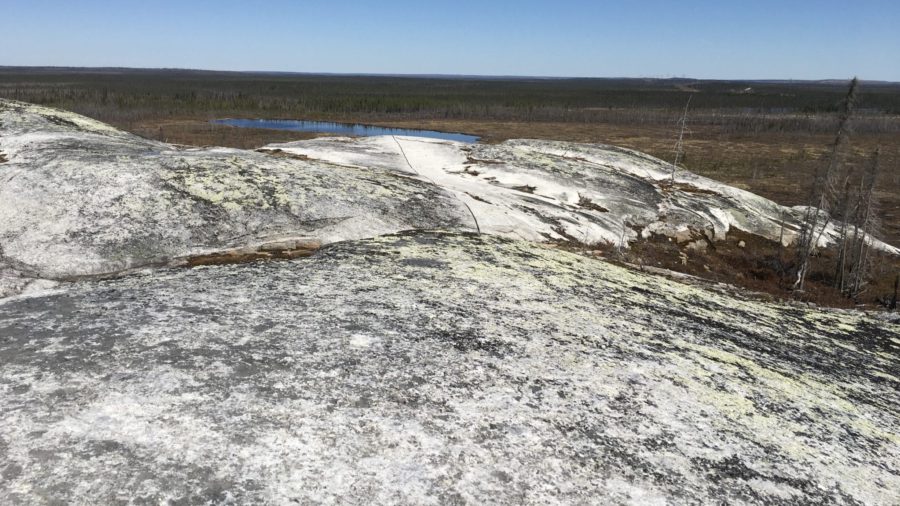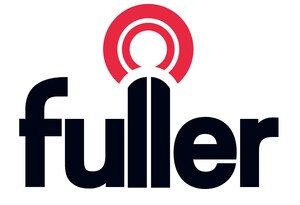No.1 Nutrien heads Top 40 List: 2019 edition

At Teck’s Quebrada Blanca copper mine in northern Chile. CREDIT: TECK
Once again, CMJ is proud to offer this snapshot of our mining industry – the Top 40 Canadian miners ranked by their gross revenues.
Looking at 2018 revenues we find the No. 1 on our list is Nutrien. How can it not be? The combination of Agrium (for several years the leader) and Potash Corp. of Saskatchewan (No. 6 last year) vaulted the new enterprise to the top with revenues surpassing $24.4 billion.
We usually use updated numbers for comparison to a year earlier because they may have been restated in certain cases.
However, there were no 2017 figures for Nutrien, so we have added numbers from both Agrium and Potash Corp. to estimate what they might have made two years ago had they been a single company.
(Follow the link below to read the Top 40 table. Other links appear at the end of the article.)
1. Canada’s Top 40 by gross revenue
Congratulations to base metal, coal and oilsands producer Teck Resources, which is once more No. 2. In 2018, Teck had revenue of $12.6 billion, roughly half the revenue that Nutrien generated.
Closely behind Teck (if $600 million can be considered “close”) is Suncor Energy’s oilsands business at $12 billion.
Despite the downturn in the oil and gas sector as well as the Alberta government’s decision to cut back production, Suncor enjoyed a boost to production with a year of commercial operation from it new Fort Hills joint venture project.
Canadian Natural Resources, another oilsands producer, also had a large jump in revenue to $11.5 billion from $7.1 billion.
This No. 4 company profited from 12 months of revenue provided by the 70% of the Athabasca oilsands venture that it acquired in May 2017.
Sitting in the No. 5 spot and down from No. 3 is Barrick Gold at $9.4 billion. Revenues in 2017 were $10.9 billion. The drop in production occurred despite the amalgamation of Barrick and its rival Randgold, for which Barrick paid approximately $7.8 billion.
Four of the next five companies are gold producers, with the exception of copper producer First Quantum Minerals sitting at No. 6 with revenues of $5.1 billion. That company is followed by Kinross Gold ($4.2 billion), Goldcorp ($3.9 billion), Agnico Eagle Mines ($2.8 billion), and Yamana Gold ($2.3 billion).
Canadian gold miners, even the biggest ones, were plagued by net losses in 2018. Barrick lost $1.4 billion, Kinross lost $33.2 million, Goldcorp lost $5.4 billion, Agnico lost $423.4 million, and Yamana lost $385.8 million. Gold mining is a tough sector when the top company goes from a profit of $2 billion in 2017 to a loss of $1.4 billion in 2018 as Barrick did.

Pretium Resources’ Brucejack gold mine in British Columbia. CREDIT: PRETIUM RESOURCES
Most of the top gold producers had losses in 2018 after healthy profits in 2017. The losses tell us more about the geopolitical stage than anything else. U.S. President Donald Trump’s willy- nilly tariffs unsettled investors who found other potentially more profitable places for their money. Meanwhile, the cost of goods and labour continue to rise for gold miners.
Year of M&A
Last year was a busy year for mergers and acquisitions. Many of these deals affected Canadian miners, taking some out of contention for the Top 40 and putting others on the list for the first time.
As mentioned, the combination of Agrium and PotashCorp. has created a world leading potash and fertilizer producer now known as Nutrien.
This is the last time that we can count Goldcorp among the Canadian Top 40. Its $13-billion takeover by American Newmont Mining means that its assets now belong to an American company. Although we are sad to see Goldcorp join the foreign ranks, we are pleased that the combination created the world’s largest gold producer – Newmont Goldcorp – with annual output of 5.1 million oz. in 2018.
The Newmont Goldcorp deal that closed in April 2018 pushed former top gold miner Barrick to second spot with an output of 4.53 million oz. last year, despite the fact that the merger of Barrick and Randgold made Barrick the top producer in 2017.
Goldcorp wasn’t the only Canadian miner to find itself south of the 49th Parallel. The Nevsun name vanished thanks to a takeover by Zinjin Mining of China. Klondex Gold was swallowed up by Hecla Mining of Idaho.
Tahoe Resources was acquired for $1.3 billion in a controversial move by Pan American Silver, which appears again on this year’s list, this time at No.18.
Brio Gold was acquired by Leagold Mining in Vancouver. Not only did this deal keep ownership in Canada, but the combined resources ($513.9 million) put Leagold on the Top 40 list – at No.32 – for the first time. (Brio Gold was No. 25 in 2017.)
Other names on the list for the first time include Pretium Resources at No. 27 ($589.2 million) and Osisko Gold Royalties at No. 33 with $490.5 million – more than double its 2018 revenue compared to 2017.
Another addition to this year’s list is Alamos Gold at No. 24 with revenues of $844.7 million. The company should have been on last year’s list, but due to an error on our part, it was omitted.
Keen-eyed readers will also note the omission of Syncrude among the Top 40. Sometimes its oilsands revenue can be estimated from the numbers in its sustainability report. The latest available information is for the year 2017, meaning we could not estimate numbers for 2018. Output from Syncrude accounts for a good part of Suncor’s revenues, and readers will have to be content that the revenue is reflected there.
The five runners-up for the Top 40 this year are Gran Colombia Gold, Taseko Mines, Fortuna Silver Mines, Sierra Metals and Copper Mountain Mining are metal miners – gold, copper, molybdenum, and silver. There were only a few million dollars of revenue separating No. 40 Golden Star from No. 41 Gran Colombia Gold.
Measuring “top”
Another, more often cited, measure of a “top” miner is market capitalization. The Norther Miner published such a list on July 16, and a quick comparison finds all of the 10 biggest TNM miners are also among our Top 40. For interest, the top 10 by capitalization are Nutrien ($41.4 billion), Barrick ($35.9 billion), Teck ($17 billion), Agnico Eagle ($15.8 billion), Kirkland Lake Gold ($11.9 billion), First Quantum ($8.5 billion), Kinross ($6.3 billion), Cameco ($5.6 billion), Lundin Mining ($5.4 billion), and B2Gold ($4.0 billion).
And there are other yardsticks by which to measure the “success” of a mining company.
One might be to look at revenue growth year-over-year. Topping this list is Pretium Resources, whose resources more than doubled thanks to commercial production at its Brucejack gold mine in British Columbia. So did those of Osisko Gold Royalties as it continues to buy metal streams, and Leagold Mining thanks to the acquisition of Brio Gold.
Revenue decreases were registered by those at the bottom of this list, whether it was a little or as much as 20%. The biggest revenue shrinkage occurred at Imperial Metals, where production was suspended at its Mount Polley copper-gold mine in B.C. as prices remained weak. The company’s remaining operating mine is Red Chris (now 70% owned by Newcrest Mining).
Having revenue and turning it into net earnings is fraught with the vagaries of commodity markets, the rising cost of labour and equipment, capital expenditure demands, exchange rates, and more. Only 15 of our Top 40 managed to eke out net earnings in both 2017 and 2018. Three of them were precious metals producers – Wheaton with a seven-fold increase; Kirkland Lake Gold, where the revenue more than doubled; and North American Palladium, with a three-fold-plus jump.
Others include Nutrien, with a six-fold increase as well as Turquoise Hill and Suncor, both of which managed to triple their earnings or better.
One might also look at a company’s assets to rank them. Unsurprisingly, the top revenue generators had, for the most part, the largest assets backing them up. No. 1 Nutrien has assets of close to $60 billion; No. 3 Suncor’s oilsands business has $57.6 billion; No. 4 Canadian Natural Resources has $39.6 billion; No. 2 Teck also has $39.6 billion; and No. 6 First Quantum has $30.5 billion.
The biggest names in gold mining are also near the top of the asset list. No. 5 Barrick has $29.3 billion; No. 8 Goldcorp has $22 billion, No. 7 Kinross has $10.5 billion, No. 10 Yamana has $10.4 billion, and No. 9 Agnico Eagle has $10.2 billion.
With the addition of No. 15 Turquoise Hill, which is the eighth largest asset holder with $17.3 billion, that rounds out the top 11 asset holders.
Another method of looking at successful miners, is to compare revenue as a percentage of assets. Golden Star Resources led the way by having revenues worth 65% of its assets. North American Palladium was not far behind with 59%, then Kirkland Lake Gold with 54%.
Is this a valid method of comparison? Perhaps. Taking assets – a measure of what is in the ground – and turning it into cash – revenue – is the whole point of any mine. A company that ca n grow both its assets and revenue year over year is on the path to longevity.
This is the final Top 40 compilation for this writer. I am retiring this fall after more than four decades as an observer of the Canadian mining scene. As always, contact CMJ with your comments and suggestions.
1. Canada’s Top 40 by gross revenue
3. Largest revenue gains year-over-year
4. Largest earnings gains year-over-year
5. Asset changes year-over-year
6. Net earnings as a percent of revenue
7. Revenue as a per cent of assets





Comments